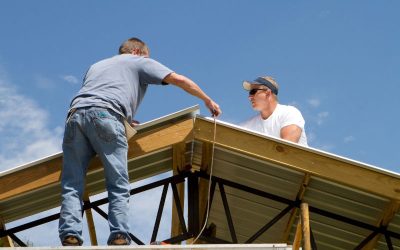Spray polyurethane roofing, better known as foam roofing in Oklahoma is made by mixing and the applying a two part liquid solution which, upon contact with each other become foam, thereby producing the base of a fully adhered roofing system. The foam can be applied in layers to provide any specific thermal ratings required. The thermal demands from the north to the south of the country are different, SPF roofing allows for the management of the R-value via the thickness of the application. The layers are usually put on in half to one inch passes and the finished foam layer can be several inches thick. The professionals who apply the foam are also masters at applying it with a gentle slope so that water puddles cannot form on the roof.
The material that creates the foam itself, which is closed-cell foam, is in two parts. The first part “A” is isocyanate and the second part “B” is polyol resin. A special pump and metering system delivers the chemicals separately until the nozzle where they are heated and then meet for the first time. This foaming creates a volume approximately 30 times that of the two liquids. Once the foam application is completed, this is called the substrate, a protective surface is applied.
Foam roofing in Oklahoma is subject to the harmful effects of UV radiation so an elastomeric coating is then applied. The membrane is also sprayed on and often in two or three passes and can be acrylic, butyl rubber, silicone or other coatings as long as they move at the same rate as the foam substrate. Often a granular material is mixed with the coating to add additional protection.
Although the chemicals used to produce the foam are the same everywhere, the blend is different for different ambient temperature ranges. The foam polyurethane used in the foam roofing in Oklahoma is not the same as say, New Hampshire. The chemical compounding is done by professionals who know their business, the compound is often altered by the addition of a catalyst which changes the chemical make=up of the foam so it can accommodate the temperature where the installation is taking place. It’s just not the temperature that has to be taken into account. The correct mix can also be affected by humidity, surface moisture expectations and sunlight.
The materials used in foam roofing Oklahoma are all ASTM approved, ASTM being the American Society of Testing Materials. The standards ensure not only the chemical compounding but they also address the application of the foam.
The finished roof should be covered by warranty. There will be two warranties, one from the manufacture of the material and the other from the contractor who will warrant his workmanship. The warranty will more often than not be two years.


